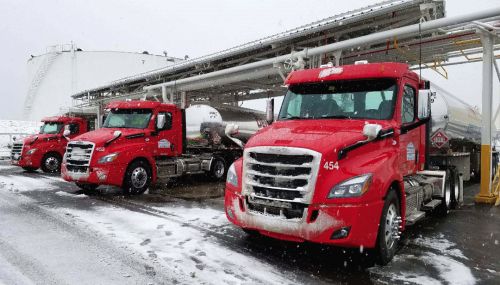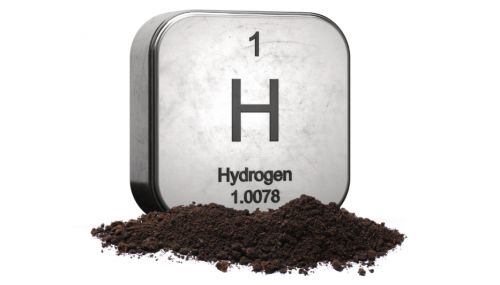All
Monitors Enhance Fuel Delivery
by Ed Burke, Dennis K. Burke Inc.

Remote tank monitoring has become a very handy tool for many fuel dealers. Sure, it’s a great tool to monitor your customer’s tank levels and usage, but the real value may be the savings from more timely deliveries. Tank monitoring adds a whole new dimension to planning efficiently.
Installs and Maintenance
With most systems, you buy the remote monitoring unit. Then there’s a small monthly monitoring fee, which varies a little bit, depending on how many times the unit reports each day.
Installations usually take about half an hour, and you basically just need an available bung on the tank. You just unscrew it and put in a little tube, then feed the probe down the tube. Attach the unit to the top of the probe, and you’re good to go.
On the maintenance side of things, they don’t really require much. They’re reliable, even in extreme weather conditions. The battery has to be changed out every 18 to 24 months, but for the most part, they just run.
There’s a piece on the internet that gives you the battery level. When the battery level gets down to about 20 to 30 percent, you have to send someone out to replace the battery.
Reliable and User-Friendly
The online screens are pretty easy to use. They tell you what product is in the tank, and how many gallons per day they’re using. It also shows you the daily usage for the seven-day period and a 35-day period, so you can get a feeling for the more immediate and a longer-term view.
It sends email alerts. You can set a low alarm and a critical low alarm so that your dispatchers get an alert that reminds them not to forget this tank.
We typically have our tanks report twice a day, at 4 a.m. and 4 p.m. The morning dispatcher gets a chance to review the tank levels, and they’re checked again when the night dispatcher comes in. For us, that’s enough to get a good feeling for volume and how much product the customer is going through.
There are some tanks where the volume is much higher and requires closer monitoring. We might have them report five or six times a day, depending on what the volume is, and how fast they’re going through product.
Accounts Prefer Monitoring
For the guy who manages the fuel, tank monitoring is an easy solution. Now he doesn’t have to go out in the back yard each day and check volumes. He can go online to check the volume from anywhere, with more usage data than his own tank software probably offers.
Once we get a monitor on an account, we’re able to blend into the background of their daily operation. They don’t have to worry about checking tanks or ordering fuel. We just show up with fuel, and they never run out.
Which Tanks to Monitor
Not all tanks need monitoring. A lot of accounts are fairly ratable. So which accounts should you consider monitoring?
Every now and then, we have folks that come to us after another fuel dealer has let them run out fuel, one too many times. We can offer tank monitoring with automatic deliveries so they don’t have to worry about run-outs anymore.
Sometimes tank monitoring is a good solution when you have a customer on an automatic schedule, but you’re concerned because their usage isn’t very ratable.
Remote tank monitoring is a huge part of ensuring that emergency generators accounts are monitored regularly, always fueled, and ready for service.
When storms are approaching, tank monitoring definitely helps us get a jump on preparations. It allows us to plan deliveries earlier, so we can handle the true emergencies on the day before the storm.
Remote tank monitoring is a blessing when you’re trying to deal with product retains left on the truck. Our dispatchers can go on the screen, tell it the product and vicinity, and it comes back with accounts in that area that can use that product.
As you might imagine, data from tank monitoring systems can also be very useful in market timing situations.
Monitoring Lube Oil and DEF
Monitoring lube oils is a little different from monitoring fuels. Lubes are more ratable, and it’s unlikely a guy is going to use up 1,000 gallons of lube oil in a day. But with the lubes, it allows us to just be more efficient from a planning perspective.
For example, we know a truck is going down its route with product XYZ. We can look at other XYZ tanks in the area and say okay, this guy is going to need a delivery in the next few days, so let’s hit them now. So it does allow you to maximize the truck, from that perspective.
We really haven’t done a lot of monitoring with DEF because it is so ratable, but we do use them on the larger volume accounts.
So take a look beyond tank levels, remote tank monitoring is a great plus in any fuel dealer’s toolbox.
Related Posts
 Optimizing Operations
Optimizing Operations
Posted on February 12, 2024
 National Weather Forecasting Takes NEFI by Storm
National Weather Forecasting Takes NEFI by Storm
Posted on December 8, 2023
 A Chance Hydrogen Discovery
A Chance Hydrogen Discovery
Posted on December 7, 2023
 Winter 2023-2024 First Impressions
Winter 2023-2024 First Impressions
Posted on October 11, 2023
Enter your email to receive important news and article updates.
